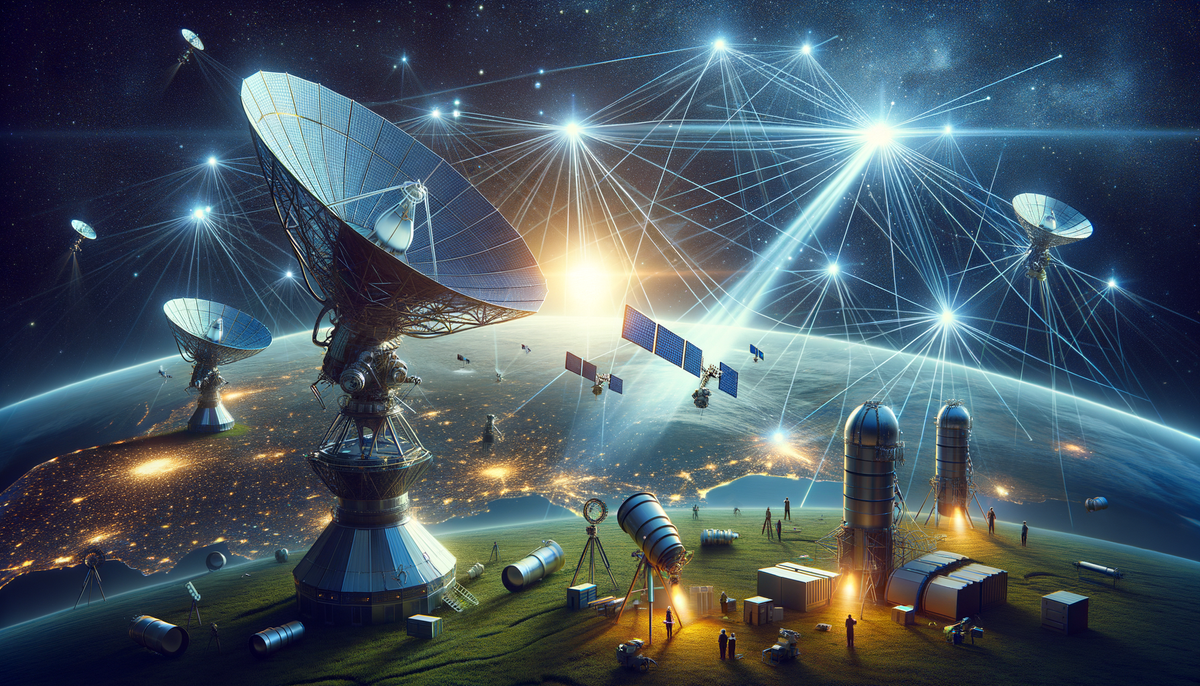Latest Developments in Starlink Satellites Revolutionizing Global Connectivity
Explore the advancements and challenges of Starlink satellites, enhancing global connectivity while addressing astronomical concerns.

Starlink Satellites: Transforming Global Connectivity
Latest Developments in Starlink Satellites Revolutionizing Global Connectivity
April 30, 2025
An Overview of Starlink Satellites
Starlink, SpaceX’s ambitious satellite internet constellation project, continues to make headlines as it aims to provide high-speed, low-latency broadband internet globally, with a special focus on remote and underserved regions of the world. Utilizing a massive constellation of small, mass-produced satellites in low Earth orbit (LEO), Starlink is set to redefine internet connectivity standards worldwide. Learn more about this development at Space.com, CNN, and Spaceflight Now.
Technical Details and Innovations
With over 6,750 satellites launched by early 2025, Starlink holds the title for the largest satellite constellation globally. Operating at altitudes below 600 km, these satellites offer unprecedented internet latency and service quality. Starlink's system is engineered for a median latency of 20 milliseconds, conducive for activities like streaming and online gaming, with continuous advancements being made to enhance stability and reduce packet loss.
Expanding Usage and Global Reach
Starlink serves millions worldwide, providing much-needed internet access to many rural and difficult-to-reach locations. Beyond residential use, Starlink's services extend to businesses, emergency services, and maritime and aviation sectors, demonstrating its wide-ranging applicability.
Challenges and Impact on Astronomy
While the Starlink satellites facilitate significant advancements in digital inclusion, they pose challenges for optical and radio astronomy. The visible streaks they cause in the night sky can interfere with astronomical research. Additionally, radio emissions from satellites risk encroaching on vital scientific frequencies. Collaborative efforts are ongoing to mitigate these impacts, involving organizations such as the National Science Foundation (NSF) and the National Radio Astronomy Observatory (NRAO).
Commitment to Space Safety
Starlink underscores its commitment to space safety by implementing stringent maneuver protocols to prevent collisions and sharing high-precision satellite position data. Such measures are critical as the number of satellites in orbit continues to proliferate, emphasizing the need for responsible space operations.
Future Outlook and Developments
SpaceX relentlessly advances the Starlink constellation through frequent launches and continual service enhancements. This dedication ensures ongoing improvements in satellite performance and reliability, underpinning the company’s stature as a leader in the satellite internet industry.
Actionable Insights for Starlink Professionals
Professionals in the starlink satellite field can leverage these developments by exploring partnerships with service providers, ensuring infrastructure readiness to adapt to expanding satellite technology, and staying informed about regulatory changes in space operations.
Conclusion: Connecting the Globe
The advancements in starlink satellites bring forward new horizons for global connectivity, while also necessitating a continued focus on mitigating impacts on the astronomical community. SpaceX remains proactive in balancing these goals, ensuring that the benefits of satellite technology are fully realized.
Call to Action: For more in-depth insights and consultation on integrating starlink satellite technologies, contact our expert AI consulting team today!




